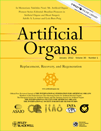The Kinetics of Cardiopulmonary Bypass: A Dual-Platform Proteomics Study of Plasma Biomarkers in Pediatric Patients Undergoing Cardiopulmonary Bypass
The senior authors, A.Ü. and D.S.P., contributed equally to this work.
Abstract
Abstract: This study was designed to investigate the expression kinetics and patterns of plasma biomarkers throughout the pediatric cardiopulmonary bypass (CPB) procedure to help predict those patients most at risk for complications. This study sampled plasma from pediatric CPB patients at five time points before, during, and after CPB. A dual-platform proteomics approach was then utilized which incorporated two-dimensional difference gel electrophoresis (2D-DIGE) coupled with matrix-assisted laser desorption ionization-time-of-flight/time-of-flight tandem mass spectrometry, and multi-analyte profile (MAP) assays to identify changes in expression of plasma protein biomarkers and characterize the patterns of these changes. A combined total of 134 proteins were identified with significant changes between the two platforms, with 53 coming from 2D-DIGE, 90 from MAP, and nine proteins that were identified using both methods. The proteins were then divided into 12 major groups based on the expression patterns, and two of the most clinically relevant proteins having the greatest changes in expression were selected from each group to use as “predictor biomarkers.” A potential model for prediction of patient outcome was then generated using these 24 proteins. The patterns of biomarker expression during pediatric CPB may provide insight into the prediction, prevention, or treatment of complications resulting from CPB, thereby helping to improve the outcomes of pediatric CPB patients and reduce the incidence of complications.




